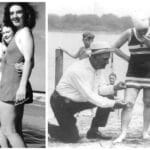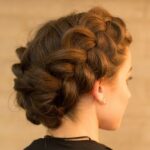Ditching the Stiff Collar: How Men Embraced Style in the Roaring Twenties
Think 1920s men’s fashion was all flappers and Gatsby glamour? Think again. While the decade roared with economic change and social liberation, the average man’s wardrobe reflected a fascinating blend of practicality and emerging trends.
Gone were the days of stuffy Victorian formality. The 1920s saw the suit become everyman’s uniform, a symbol of aspiration and modernity. But unlike the bespoke tailoring of the wealthy, everyday gents found clever ways to adapt the style, reflecting both their budgets and a growing sense of individual flair.
This is your guide to understanding not just what the average man wore in the 1920s, but why these trends emerged, and how you can still find inspiration in their timeless appeal.
The Rise of the “Everyman” Suit
The 1920s ushered in a new era where even working-class men aspired to own a suit. No longer reserved solely for the elite, the suit became a badge of respectability and success.
Vintage Dancer notes, “…even they owned second-hand and often mismatched suits, and wore them with pride.” This desire to participate in the decade’s style revolution speaks volumes about the changing social landscape.
Key Features of the Average Man’s Suit:
- Three-Piece Construction: A vest (waistcoat) was essential, along with the jacket and trousers.
- High-Waisted Trousers: This style created an illusion of longer legs and a slimmer silhouette.
- Wide Lapels: Lapels grew increasingly wider throughout the 1920s, adding to the era’s distinctive look.
Fabric and Color: A Study in Practicality
While wealthy men indulged in luxurious fabrics like mohair and fine flannel, the average man opted for durable, affordable materials that could withstand daily wear and tear.
- Popular Choices: Thick wool, tweed, and corduroy were go-to fabrics for their hard-wearing qualities and warmth.
- The Color Palette: Earthy tones dominated men’s suits – think browns, blues, greens, and grays. These subdued colors were practical, versatile, and projected an air of understated sophistication.
- A Touch of Rebellion: As the decade progressed, pastel suits in shades of pink, yellow, and green emerged, offering a bolder alternative for those willing to push boundaries.
- Pattern Play: While solid colors were most common, men weren’t afraid to add visual interest through patterns:
- Plaid: Bold plaids, particularly windowpane checks, were a popular choice.
- Stripes: From thin pinstripes to wider, more pronounced stripes, this pattern added a touch of dynamism to suits.
Beyond the Suit: Everyday Essentials
Of course, a man’s wardrobe wasn’t limited to suits alone. A variety of other garments rounded out the average Joe’s closet:
- Shirts:
- Formal Occasions: For dressier events, men donned striped dress shirts with detachable white collars for a crisp, polished look.
- Casual Attire: Colored or plaid work shirts provided a more relaxed option for everyday wear.
- Sweaters & Knitwear: Thanks in part to the influence of World War I, knitwear rose in popularity.
- The Cardigan: This versatile sweater, perfect for layering, became a staple for men of all backgrounds. Its affordability and relaxed style made it a practical choice for the average man.
- Hats: No 1920s outfit was complete without a hat. It was a sign of respectability and an essential element of a man’s ensemble. Styles varied depending on the occasion:
- Derby: This hat, with its rounded crown and stiff brim, projected an air of formality.
- Homburg: Similar to the Derby, the Homburg featured a single crease down the crown.
- Fedora: Perhaps the most iconic hat of the era, the Fedora was distinguished by its indented crown and soft brim, often worn tilted at a rakish angle.
- Boater: This straw hat with a flat crown and ribbon was a popular choice for summer, especially for formal events.
- Newsboy Cap: Worn by men and boys alike, the newsboy cap, also known as a flat cap or eight-panel cap, was a casual option favored by the working class. It rose to prominence thanks in part to its association with characters like those in the popular TV show “Peaky Blinders.”
Accessorizing the 1920s Gentleman
The right accessories were crucial for completing a man’s 1920s look:
- Ties: Bow ties and neckties were non-negotiable, adding a touch of personality and polish to suits and shirts.
- Suspenders: While belts gained traction toward the end of the decade, button-on suspenders were the go-to for holding up trousers.
- Shoes: Footwear options expanded in the 1920s:
- Two-Tone Oxfords: These stylish shoes, often featuring contrasting colors, were a popular choice for formal occasions.
- Lace-Up Boots: Durable and practical, lace-up boots were ideal for everyday wear.
- Sneakers Take Root: The 1920s witnessed the early rise of sneakers, particularly for sports and leisure activities, foreshadowing their future dominance in men’s footwear.
Adapting to Circumstance: The Resourceful Gent
It’s important to remember that the average man of the 1920s wasn’t immune to financial constraints. While photographs and films often showcase the era’s most glamorous outfits, everyday men found creative ways to stretch their wardrobes.
As Vintage Dancer points out, “…they would wear whatever they could find in a similar shade of color or simply go without.” This resourceful approach to fashion speaks to the ingenuity of the times. Men mixed and matched suit pieces, repurposed older garments, and prioritized durability over fleeting trends.
The Legacy of the 1920s: Timeless Style and Practicality
The 1920s marked a pivotal moment in men’s fashion history. It was a time when style became more accessible, when practicality met with a touch of swagger, and when men from all walks of life began to embrace the power of self-expression through clothing.
While the Roaring Twenties may be long gone, the era’s influence on men’s style endures. By understanding the “why” behind the trends—the social shifts, the economic realities, and the desire for both individuality and conformity—we gain a deeper appreciation for the timeless appeal of 1920s men’s fashion.
As you explore your own sense of style, remember the lessons of the average 1920s gent. Don’t be afraid to invest in quality pieces, embrace a touch of vintage inspiration, and above all, dress with confidence and authenticity.
Wish to know the history behind the invention of something unique and trendy? Look at the Ottoman battle of Vienna bagel invention. Do you want to learn more about an invention in 1873 located in San Francisco? Then, the 1873 invention San Francisco blog is for you! Curious about what happened to the popular ship? Read the Sinking of the Rainbow Warrior blog to find out! Want to know why Bronze Age collapsed? Click on Bronze Age collapse memes to find out.
















